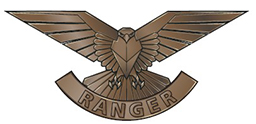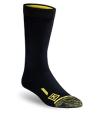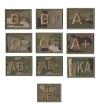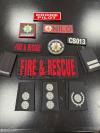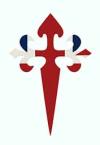Who are The Ranger Regiment?
The Ranger Regiment stands as a pivotal component of the Army's evolving global posture, representing a cornerstone of the monumental Future Soldier initiative—a transformative endeavor marking the most significant shift in the British Army's structure in more than two decades.
Embedded within the recently formed Army Special Operations Brigade, the Ranger Regiment assumes a crucial role in the nation's defense strategy. Its primary mission involves routine deployments alongside allied forces worldwide, aimed at countering Violent Extremist Organisations and addressing threats posed by hostile states.
This illustrious Regiment, stand up on December 1, 2021. On this significant date, the commencement of cadres and training for its four battalions will mark the inception of a new era in the British Army's operational capabilities. As the Ranger Regiment takes its place on the forefront of military innovation, it solidifies its commitment to safeguarding national security and contributing to the broader global defense landscape.
The Ranger Regiment takes great pride in its newly crafted cap badge, drawing inspiration and essence from the Peregrine Falcon. Symbolizing speed, agility, and unwavering loyalty to its partner, this emblematic bird operates globally across diverse terrains, including deserts, mountains, and urban landscapes. The design reflects a groundbreaking capability poised to redefine the Army's operational prowess.
Rooted in a tradition where birds have served as emblems worldwide, the Peregrine Falcon's name originates from the medieval Latin term 'peregrinus,' meaning wanderer. As the most widely dispersed bird of prey across every continent, excluding Antarctica, the Peregrine Falcon stands as a testament to adaptability and exploration. Notably, it claims the title of the fastest bird on Earth, reaching speeds of over 200 miles per hour in a dive.
In a departure from the conventional practice of cloth badges for officers and metal badges for soldiers in many regiments, the Ranger Regiment distinguishes itself by adopting a uniform metal badge for all its personnel, regardless of rank. This commitment underscores the unity and shared identity within the Regiment, epitomizing the values embodied by the Peregrine Falcon.
Beret and Belt
A distinctive gun-metal grey hue has been selected for both the regimental beret and stable belt, drawing inspiration from the grey plumage of the Peregrine Falcon.
The stable belts will feature a front fastening mechanism, secured by a circular metal buckle adorned with the Peregrine Falcon insignia derived from the cap badge. This design choice not only reflects the Regiment's commitment to uniqueness but also pays homage to the avian symbol that embodies their ethos.
Cap Badge Controversy
Upon its public unveiling, the cap badge of the Ranger Regiment became embroiled in controversy as certain commentators asserted its resemblance to the badge of the Selous Scouts, a special forces unit from the Rhodesian Army that operated during the Rhodesian Bush War. A Daily Telegraph article alleged that some British Army officers involved in discussions regarding the creation of the Ranger Regiment's beret expressed concerns about the potential resemblance to the Selous Scouts' badge and attempted, unsuccessfully, to alter the design. An anonymous source within the Ministry of Defence shared with the Daily Telegraph that, "An officer said he had seen an email saying that it was actually based on the Selous Scouts... There's obvious differences but it's close and clearly based on it."
Contrary to these claims, the British Army refuted any association, with a spokesperson emphasizing that "The Ranger Regiment cap badge has been designed around the peregrine falcon. Any comparison or association to the osprey depicted in the Selous Scouts’ cap badge is completely inaccurate." The army spokesman affirmed that the Ranger Regiment takes immense pride in its cap badge, drawing inspiration from the peregrine falcon, renowned for its speed, agility, and unwavering loyalty. This emblematic design signifies the Regiment's global operations across diverse terrains, including deserts, mountains, and cities.


